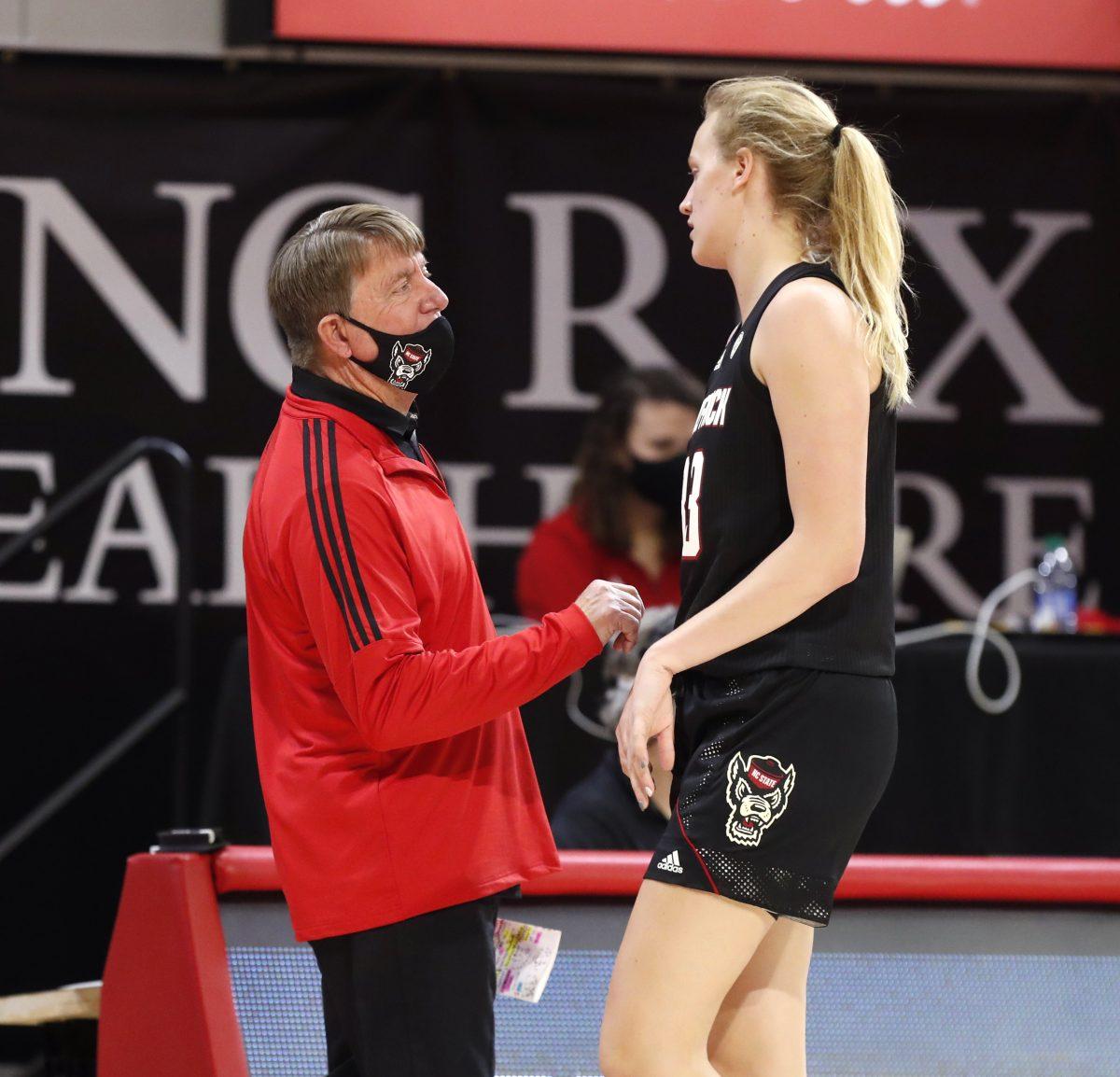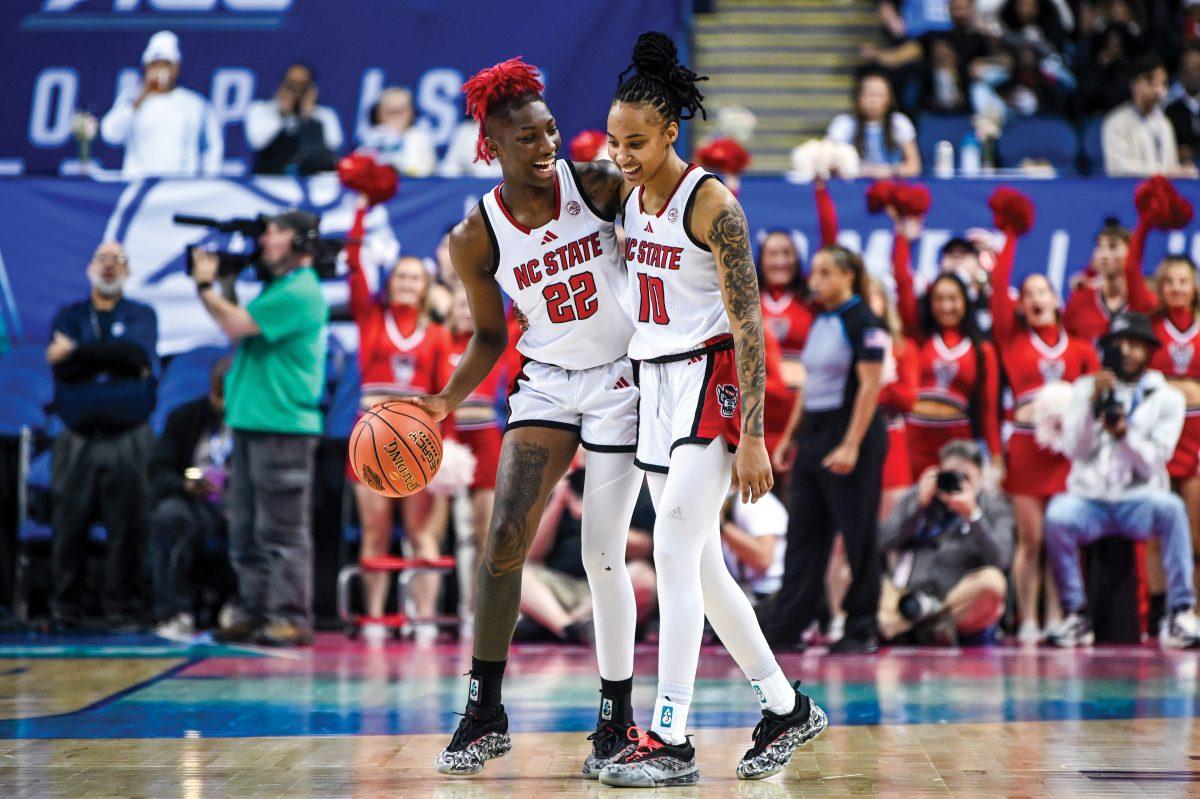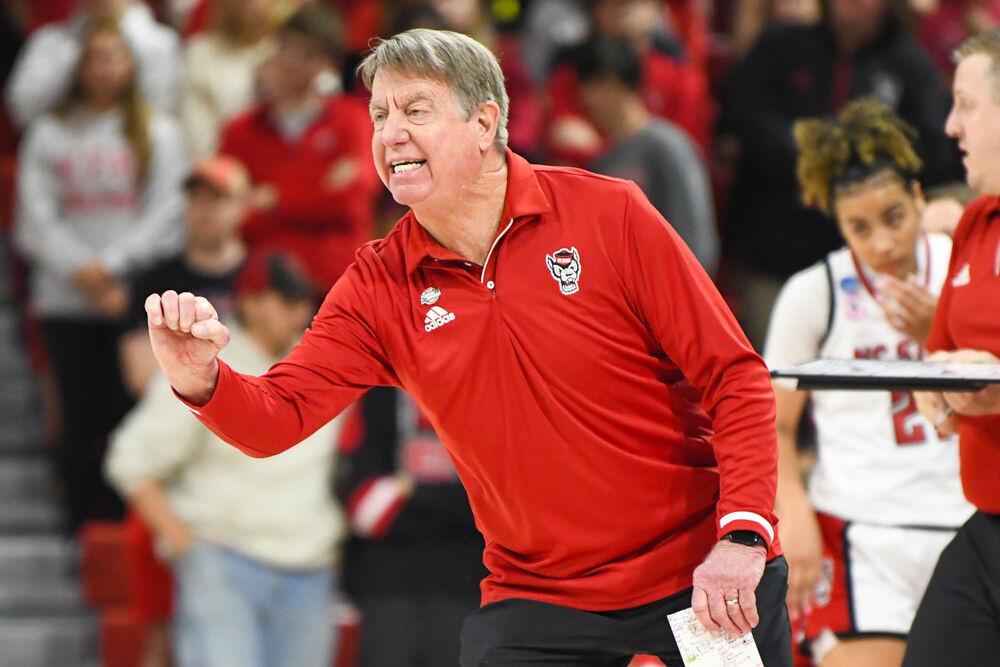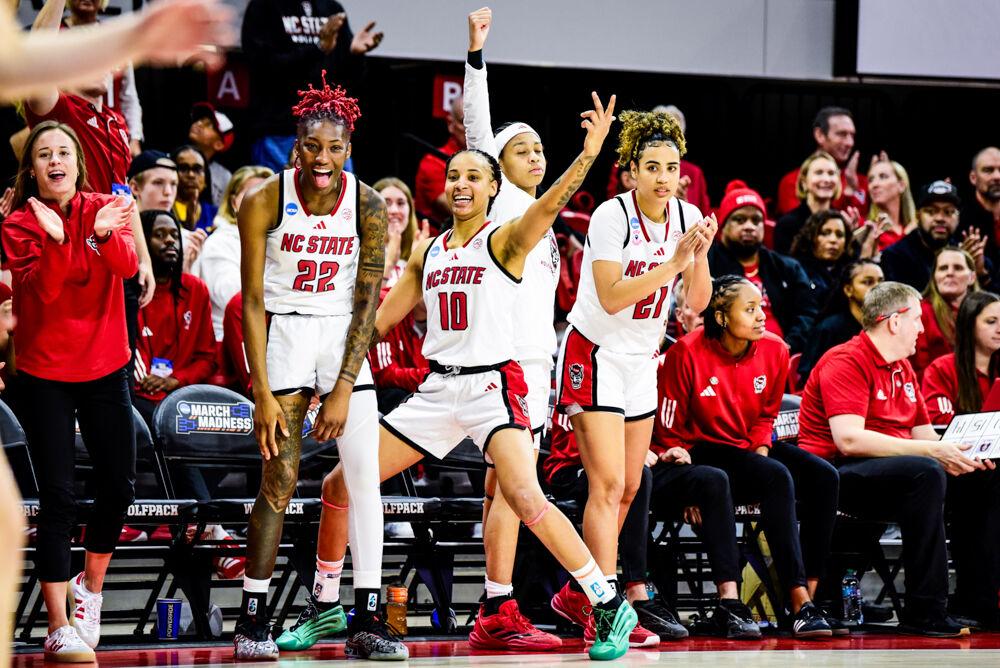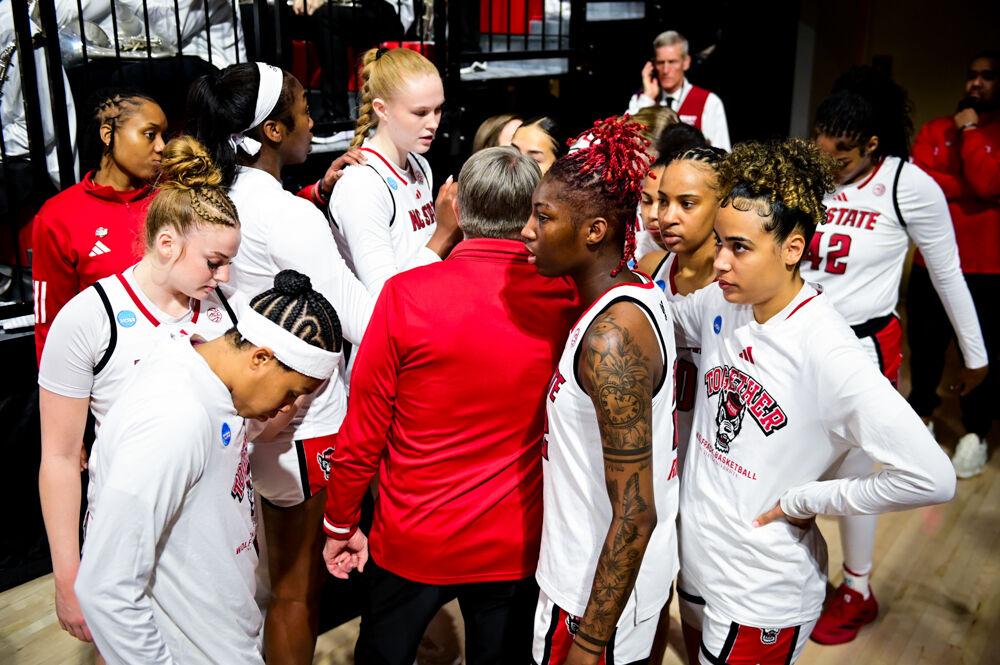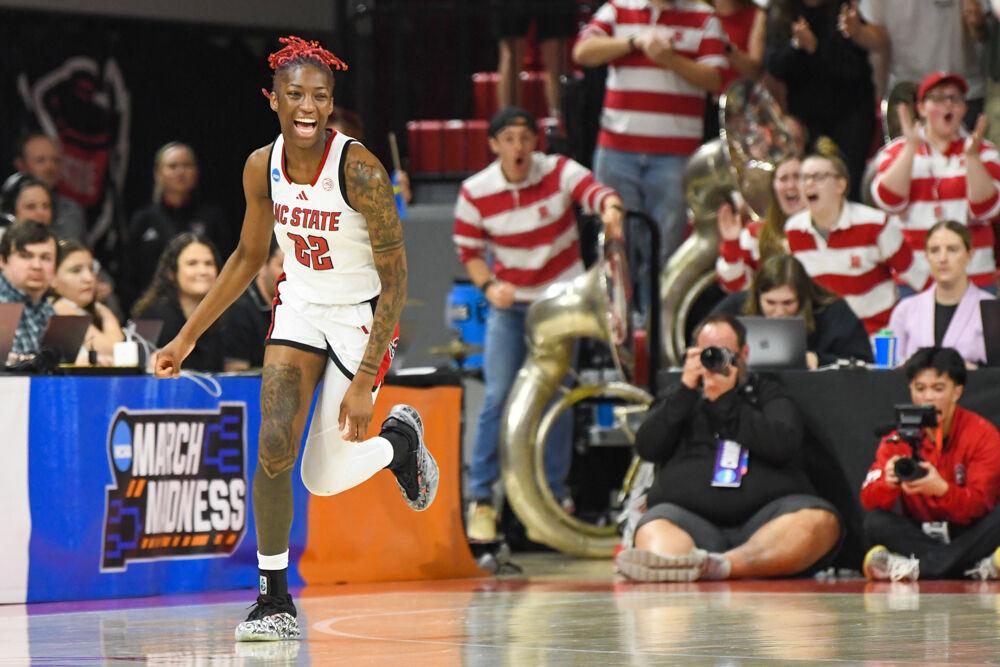The No. 4 NC State women’s basketball team is carrying its nonconference dominance into ACC play. Despite narrowly avoiding its first loss of the season at Boston College to start off its conference schedule, the Pack has proven a few noteworthy points.
This team can “win ugly”
NC State did not exactly begin conference play with a stellar performance, as Boston College nearly upset the Pack in its conference opener. After Wolfpack junior center Elissa Cunane scored the first points of the game, the Eagles took and maintained the lead from the 7:07 mark of the first quarter until there was only 1:25 left in the fourth quarter, when sophomore wing Jakia Brown-Turner sunk two free throws to put the Pack back in front. Riding its fourth-quarter momentum, the Pack was able to pull victory from the jaws of defeat despite leading for only four minutes and 22 seconds.
A main reason why the Eagles were able to surmount such a lead is that shots were just not falling for State for most of the game. In the first three quarters, the Pack went just 14-for-44 from the field. For comparison, Boston College made 24 of its 52 shots during that same period. This difference in shooting allowed the Eagles to amass a 13-point lead heading into the fourth quarter.
The fourth quarter against Boston College proved that the Pack can win games even when it is not firing on all cylinders. State erased that 13-point deficit with breakneck speed as the offense sprung back to life, shooting 8-17 in the fourth quarter. The Eagles’ offense also helped in eliminating the Wolfpack deficit by completely collapsing in the final quarter, only draining two of 16 shots.
Even though it was not the typical clinic that the Wolfpack has been putting on teams for most of the season, NC State was able to claw its way to a win against Boston College, despite trailing for just over 89% of the game.
Pack could use more production off the bench
Another significant data point on the stat sheet from the game against Boston College was the lack of bench production for State, with non-starters scoring just three points. In the case of the game with the Eagles, this imbalance can be chalked up to a lack of volume. The starting five took 56 of the 61 total shots for the Pack that game, leaving only five shots taken from off the bench.
This dependence on the starters is not an isolated incident, however. In the following matchup against Wake Forest, only nine points when scored by Wolfpack non-starters, and seven of those were scored in the fourth quarter when the game was well in hand. Looking at field goal percentage, the Pack’s bench players shot 4-for-18 from the field, so this lack of production cannot be attributed to lack of minutes. State’s players off the bench also accounted for only six of the team’s 40 rebounds, three of 20 assists, and eight of 14 turnovers against the Demon Deacons.
The bench play was better against the Miami Hurricanes, shooting 8-for-16 from the field and accounting for 23 of the 48 Wolfpack rebounds, but the turnovers remained an issue as the non-starters committed 13 of State’s 18 turnovers. Granted, much of the bench production against the Hurricanes occurred in the second half after the Pack had built a 32-point halftime lead, so a win was almost certain for NC State.
However, this lack of depth could cause trouble for the Wolfpack if left unremedied. Starters have played 425 of the 600 team minutes and scored 198 of 232 points scored. As good as the starting five is, this lack of bench production raises concerns about load management and roster depth going forward.
Pack needs to minimize mistakes
Against Miami, State scored eight more points off turnovers than the Hurricanes. Against the Demon Deacons, Wake Forest outscored the Pack by five in this regard, but when excluding the fourth quarter when the game was out of reach for the Demon Deacons, the Wolfpack eked out a 2-point margin in points off turnovers. Against Boston College, the two foes were dead even.
A similar story is told when looking at second-chance points. NC State scored eight, six and zero more second chance points than Miami, Wake Forest and Boston College, respectively.
While not egregious, this inability to minimize its mistakes could cause trouble for the Pack against more formidable foes.
Through its first three conference games, State has scored exactly one point per opposing turnover (41 points off 41 turnovers) whereas its opponents have trailed only slightly in this aspect at 38 points off 45 turnovers. Noting the -5 turnover margin for the Pack in conference play, a more opportunistic opponent could expose this flaw on the way to an upset.
Additionally, the Wolfpack actually trails its conference opponents in percentage of scoring from second chance points, as the Pack has scored 49 of its 232 (around 21%) points off second chances whereas opponents have scored 35 such points out of 181 total points (around 19%) in conference play.
This statistical tidbit could actually be interpreted positively. While State is trailing in this regard, this also means it is not as dependent on second chance scoring, and can emphasize defensive rebounding to negate its opponents attempts to capitalize on second chance scoring.
Although NC State remains undefeated, it has lost some steam in conference play. But as it demonstrated against Boston College, the Pack does not need to dominate the entire game to win, so while a State return to its non-conference form is ideal, it is not necessary to continue winning games.


